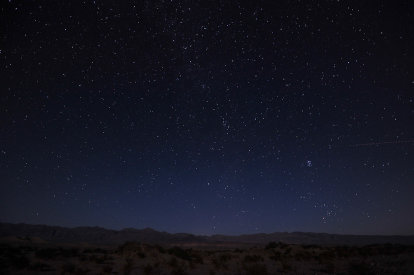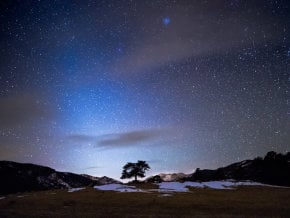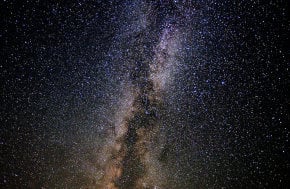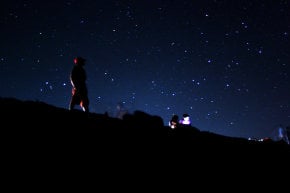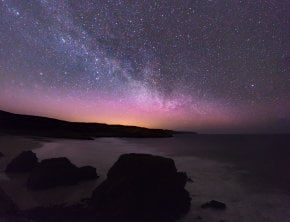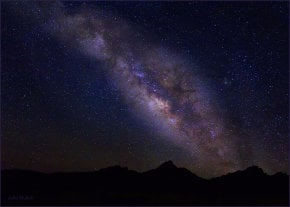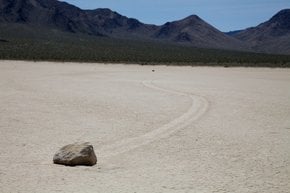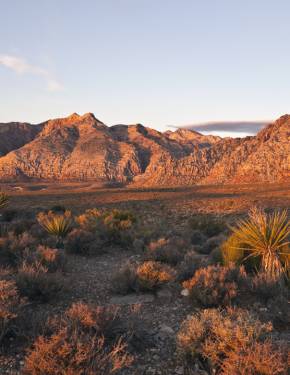Stargazing in Death Valley 2025
This is why you'll want to put stargazing in Death Valley on your bucket list
Best time: all year round (but the best time is from early February till mid September)
They say that in Death Valley, the sky begins right beneath your feet, which makes it one of the finest stargazing destinations. And, although the name of the valley may seem a bit frightening, the experience you can get there is quite the opposite. Let’s see when the best time to go stargazing in Death Valley is and what spots you should head to.
When to go stargazing in Death Valley
As it’s been mentioned, Death Valley isn’t intimidating at all. On the contrary, it is super comfortable, but only if you know when to go there.
Generally, the area is good to visit all year round, but we recommend heading there during the New Moon phase. We are talking about the winter months and, specifically, the first half of February. The reason is pretty simple: during this time, the light pollution in the area is as low as it can be, allowing you to get the best viewing experience. Plus, in early February, the temperatures are the most bearable, making your stay in Death Valley as pleasant as possible. In addition, astronomers associated with The Oasis at Death Valley go out and help you in your stargazing adventure.
The best stargazing spots
Death Valley offers some of the finest stargazing spots on the planet. And almost all popular destinations are located within Death Valley National Park. This area offers views of the darkest skies in the country and is certified as the third dark sky park in the US. In addition, the territory has improved lighting options and all comfortable conditions for embarking on your stargazing adventure. You can either join local stargazing tours or plan your own tent trip.
If you decide to go on an independent star-watching trip, bear in mind that you’ll need a car. Death Valley National Park offers some of the finest views and experiences, like windy roads, mountain passes, historical masterpieces, and many natural wonders. So before settling for a nighttime sky experience, don’t hesitate to go sightseeing. Now, let’s see which points are the best for you.
Harmony Borax Works
Experienced visitors head straight to Harmony Borax Works as this area offers an elevation, allowing you to enjoy the clear night sky without any obstructions. In addition, Harmony Borax Works is located close to the Furnace Creek Visitor Center and is really easy to get to. During your stay in Harmony Borax, be sure to explore its historical background, filled with historic buildings, mule carts, and other long-forgotten ancient pieces.
Badwater Basin
This basin is ultimately one of the best stargazing points. Even though it is located on a lower elevation and is quite obstructed by the mountains, its benefits still outbalance this drawback. The reason why Badwater Basin is so popular lies in its combination of convenience and beauty.
First, you can easily reach the basin as it’s only 17 miles from Badwater Road. Second, the area has a tremendous advantage over other sky-watching spots—it allows you to avoid light pollution, one of the stargazing enemies. This way, you’ll be able not just to enjoy the bright stars against the dark and clear sky but also take awesome pictures of it. And if you want to get a full experience of the basin area, bring a guide along.
Ubehebe Crater
This crater is definitely a unique place for watching the stars. Formed after a volcanic eruption many years ago, this area now provides a unique and isolated spot with a great horizon line. This way, despite the relatively reduced visibility, you’ll be able to see the stars from a totally different angle. And, if you’re a hiking enthusiast, going up the Ubehebe mountains during the day could be a cool activity for you.
Tips
Many people, especially beginners, underestimate the importance of being prepared for this experience. So whether you’re a professional sky-watcher or an industry newbie, here are some life hacks to get you ready for the trip:
- Check out the night sky almanac beforehand to know exactly what you could see; - Don’t rush and let your eyes adjust to the dark (it takes approximately 30 minutes); - No matter what destination you end up going to, pick an elevated area to view the stars from; - Grab a pair of binoculars (self-explanatory, right?); - Bring some food and drinks (especially during the hottest season).
There you go! Remember that Death Valley is one of the world’s top places to go stargazing in. So don’t hesitate to make this bucket-list-kind-of-a-thing trip a reality and book your accommodations in advance.




